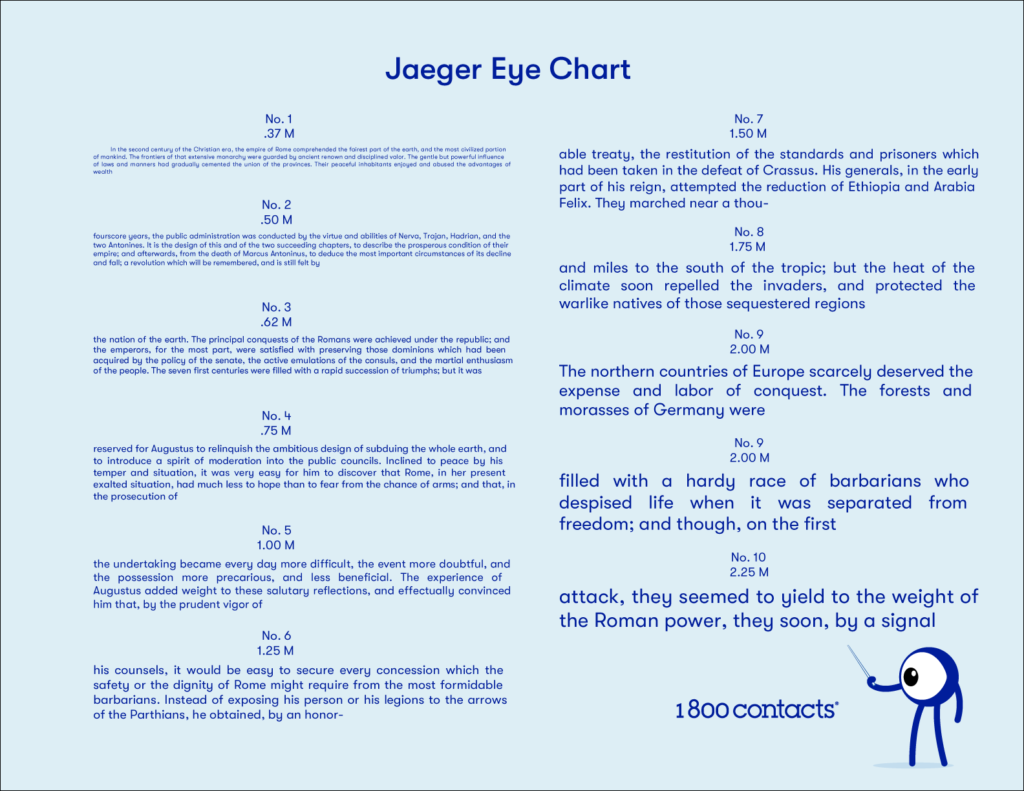Eye test charts
If you're a human being over the age of five, you've probably seen an eye test chart. You know, those things you see in eye exams with big letters at the top and smaller letters down below? We're about to tell you everything you've ever wanted to know (and everything you've never cared to know) about eye test charts.
So, pop some popcorn, get cozy, and get ready for (1) a brief yet riveting history of eye test charts, (2) functions and limitations of eye test charts, and (3) types of eye test charts.
A brief yet riveting history of eye test charts
We'll give you the Wikipedia digest. A long time ago, in... er... our galaxy, eye doctors needed a standardized way to examine visual acuity. This guy named Dr. Kuehler proposed the first eye exam to test acuity. Then, this other guy named Dr. Jaeger created a chart to test near vision. Finally, in 1862, a Dutch optometrist named Herman Snellen developed a highly reliable chart to test visual acuity. Snellen's eye test chart became the global standard.
Snellen's chart and its predecessors paved the way for our ridiculously convenient online vision exam.
Functions and limitations of eye test charts
Doctors use eye charts to monitor visual acuity and test for vision impairment. Charts are placed at a standardized distance (e.g., 20 feet for the Snellen chart) from the person being tested. Patients identify the chart's letters, starting with the bigger ones, until the letters get so small that a "B" looks like an "X." One's visual acuity is determined by the smallest row of letters they can read. A person with normal, average eyesight has 20/20 vision.
The American Academy of Ophthalmology reminds us that eye test charts do have some limitations. Eye charts don't help with eye diseases, and they can't measure things like peripheral vision, depth perception, retina conditions, or how much you cried during The Lion King.
Types of eye test charts
Snellen chart

Picture an eye test chart. You're probably thinking of the Snellen chart. Snellen's chart usually has 11 rows of capital letters. The first line has a large letter, and subsequent lines have progressively smaller letters.
"Tumbling E" chart

This aptly named chart is basically a Snellen chart, except that all the letters are capital "Es," rotated in 90-degree increments. "Tumbling E" charts are helpful for young children and other patients who can't read. These test-takers use three fingers to show which way the letters point. Studies show that "Tumbling E" charts work just as well as Snellen charts.
Jaeger chart

Last but not least: the Jaeger chart. We’ll skip our moderately funny Jagermeister joke and just tell you that a Jaeger chart is a hand-held card that evaluates near vision. Jaeger cards have short, variously sized paragraphs.





